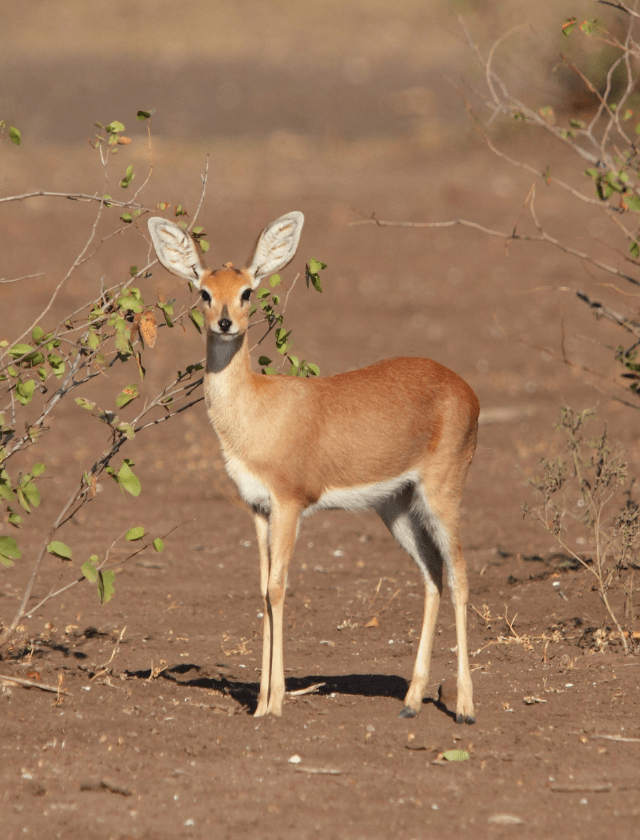The steenbok is a small antelope species found throughout much of southern and eastern Africa. They are named after the Afrikaans word “steenbok,” which means “stone buck,” due to their preference for rocky habitats. They are a small animal, with adults standing around 60 cm tall at the shoulder and weighing around 10-15 kg.
Steenboks are not considered to be dangerous to humans, and are not typically hunted for sport. However, they are sometimes hunted for their meat and hides by local communities.
Steenboks are found in a variety of habitats, including savannas, grasslands, and rocky hillsides. They are well adapted to living in arid environments and can tolerate hot and dry weather. They are also capable of surviving in cooler climates as long as they have access to sufficient food and water.
Steenboks are primarily active during the day, although they may be active during the night in areas where they are threatened by predators. They are solitary animals, and are generally only found in pairs during the breeding season.
As herbivores, steenboks primarily feed on grasses and other vegetation. They have a specialized digestive system that allows them to extract nutrients from tough plant material, which makes up the majority of their diet. They will also browse on leaves and other soft plant material when available.
Steenboks are an important prey species for many large predators in Africa, including lions, leopards, and wild dogs. Their small size and cryptic coloration make them difficult to spot in their natural habitat, which helps them to avoid predators. They are also known for their exceptional agility and speed, which allows them to outrun most predators in short bursts.
In conclusion, the steenbok is a small and elusive antelope species found throughout southern and eastern Africa. While not considered to be dangerous to humans, they are sometimes hunted for their meat and hides. They are well adapted to living in arid environments and are primarily active during the day. As herbivores, they primarily feed on grasses and other vegetation, and are an important prey species for many large predators in Africa. Their small size, cryptic coloration, and exceptional agility and speed make them a difficult target for predators. Conservation efforts are important to ensure the continued survival of this remarkable animal for future generations to enjoy.



